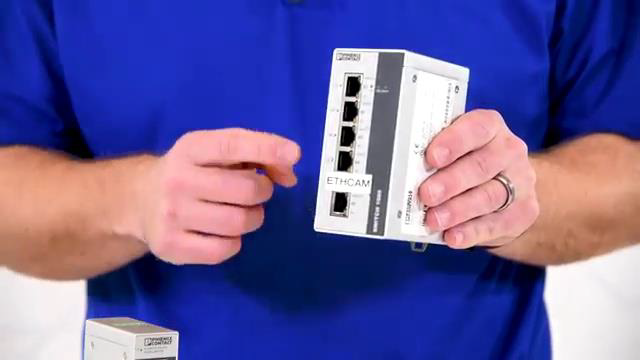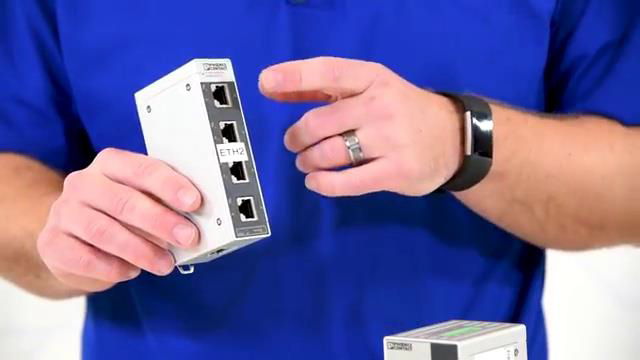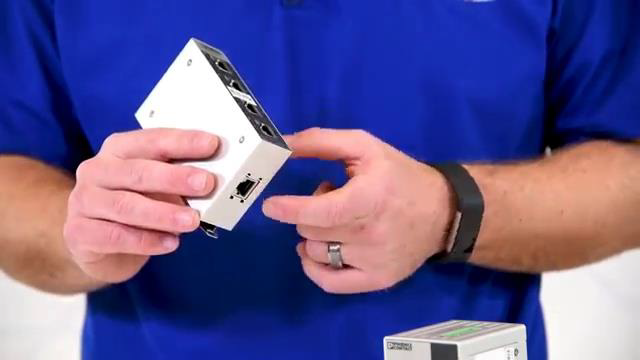Industrial_Ethernet_Switch_How_to_Select.pdf
Things to consider when selecting an industrial ethernet switch
Does it need to be managed or unmanaged?
Consider your power requirements
- What type of power do you have access to?
- Most likely, the switch will require DC power, so you may need a power supply
What is going to be connected to the switch?
- Do the devices that are being connected need power? If so, you will need a POE switch
- How many devices do you intend to hook up? Make sure you have enough spare for future devices
How much data do you intend to run through the switch?
- The speed of the switch will impact how much data you and send and receive
- You need to choose between copper ports (much more common) and fiber ports
Transcript:
[0m:4s] Hi I'm Josh Bloom, welcome to another video in the RSP Supply education series. If you like these videos, it certainly helps us if you can please like and subscribe.
[0m:13s] In today's, video we're going to discuss the different things that you should consider when selecting an industrial ethernet switch for your specific application.
[0m:21s] For more information on industrial ethernet switches, please reference our other video which we will link in the description below. Ethernet switches, also referred to as network switches are a common piece of hardware used in the industrial industry to help facilitate communication between various devices in your particular application.
[0m:40s] The network switch sends and receives data from various devices that are connected to it,
[0m:45s] and it directs this data where it needs to go. Although the basic principles of a network switch seem simple, there is a lot to consider when trying to decide what type of switch is needed for your specific application.
[0m:57s] Today we will discuss the different details that you should take into consideration to ensure that you select the right switch. One of the first things you should consider when selecting an ethernet switch is whether you need the switch to be managed or unmanaged. Let me quickly go over each so that you have a better understanding of what this means. When you have an unmanaged switch, the switch will simply receive the data from the devices that is hooked up to and route that data to the desired destination. It can do this very quickly. However, this is just about all an unmanaged switch can do. A managed switch will give you the same features as an unmanaged switch, but also gives you the added benefits of being able to configure, manage, and monitor your local area network or LAN. Because of this added control, you will have the ability to manage how the data travels across your network and also give you control over who can access it along with many other features. In many cases and unmanaged switch is all that is needed and is typically the more common option. However, there are many scenarios where a managed switch is warranted. Once this decision has been made, there are several other things that we need to consider. Now let's talk about the power requirements of the switch and what type of power you have access to.
[2m:11s] It is very common for network switches to require some form of DC power. With that in mind, it's important to consider what type of power you have in your current situation. If AC power is available, you will need a power supply in order to provide the necessary DC power the network switch will actually require.
[2m:29s] Although this is a simple step, taking power into consideration is important when selecting the right switch for your specific scenario.
[2m:36s] Next, you need to consider the type of devices that are going to be connected into the switch. Do those devices need power? And is the switch going to supply that power? If so, you need to make sure that you select a POE switch. POE stands for power over Ethernet. This type of switch gives you the ability to provide power to the devices that are connected to it as long as those devices are designed for that specific type of power. This is very common in IP cameras and surveillance equipment as well as many other devices. If none of the devices require POE, there is no need to invest the extra money that is needed for a POE switch.

[3m:13s] You should also take into consideration how many devices you intend to connect into the switch itself.

[3m:20s] Ensure that the switch you select has enough available ports to accommodate everything you need. It is a good idea to have some spare ports available in case you ever need to connect more devices in the future. Lastly, let's discuss the speed requirements you might need and whether you intend to use copper ports or fiber reports. If you intend to use and transfer large amounts of data across the switch, it is a good idea to ensure that the switch operates and high enough speeds to accommodate this data. Typically, you have a few options. The most common options are either fast or Gigabit.

[3m:54s] Fast allows for up to 100 megabits per second to be transferred while Gigabit allows for up to one gigabit per second to be transferred across the switch.
[4m:4s] So, it is important to make sure that you select a switch that can meet your current and possibly future needs.
[4m:10s] Also, you need to determine whether you want copper ports or fiber ports or some combination of the two.
[4m:17s] Copper ports are much more common and is most likely what you are used to seeing.
[4m:22s] However, fiber is becoming more commonly used as time goes on.
[4m:27s] So again, think about possible future considerations when selecting a switch with either copper or fiber ports.
[4m:34s] As you can clearly see, there is a lot to consider when selecting the proper Ethernet switch. Armed with the necessary information about your specific application as well as the different features and configurations that are available, you should be able to select the right switch that will last well into the future.
[4m:51s] For a full line of industrial ethernet switches and thousands of other products, please go to our website. For more information or other educational videos, go to RSPSupply.com, the Internet's top source for industrial hardware. Also, don't forget: like and subscribe.




